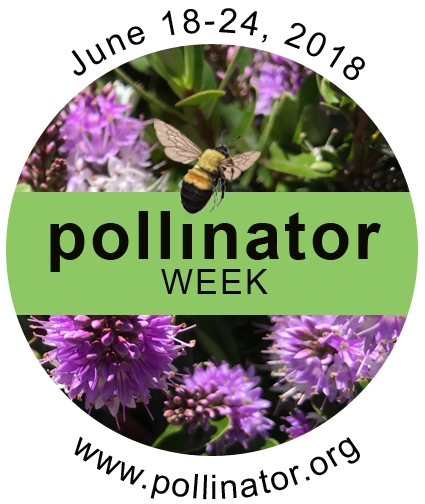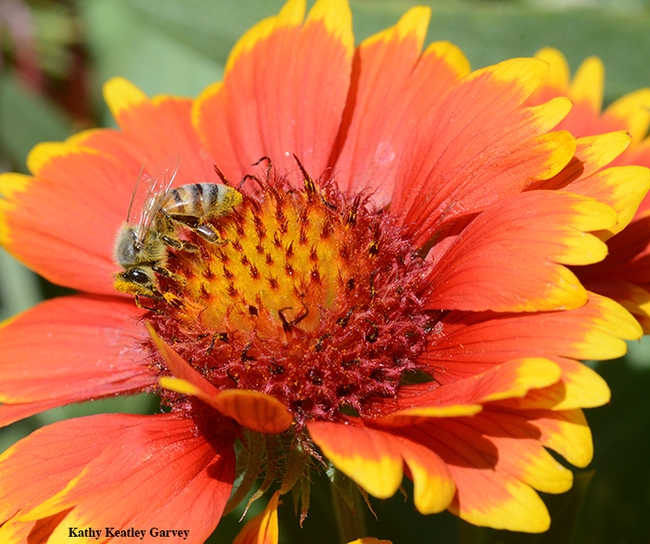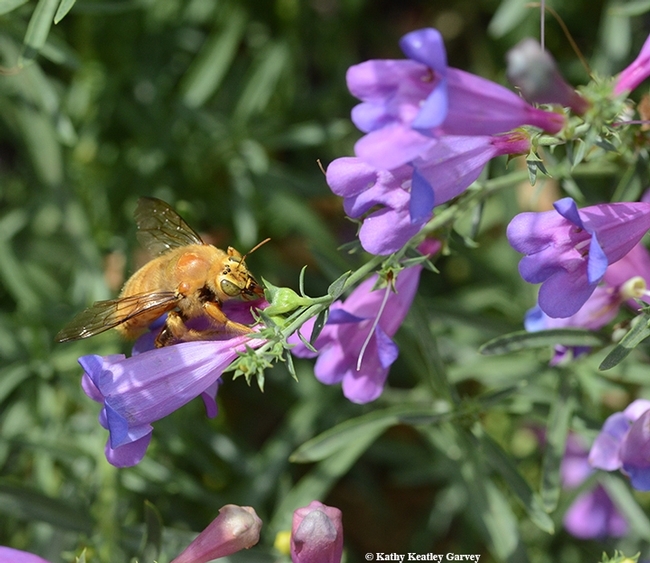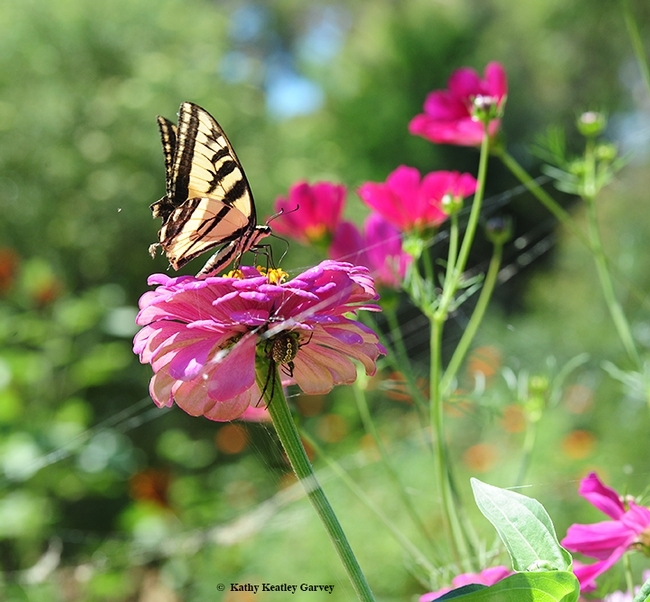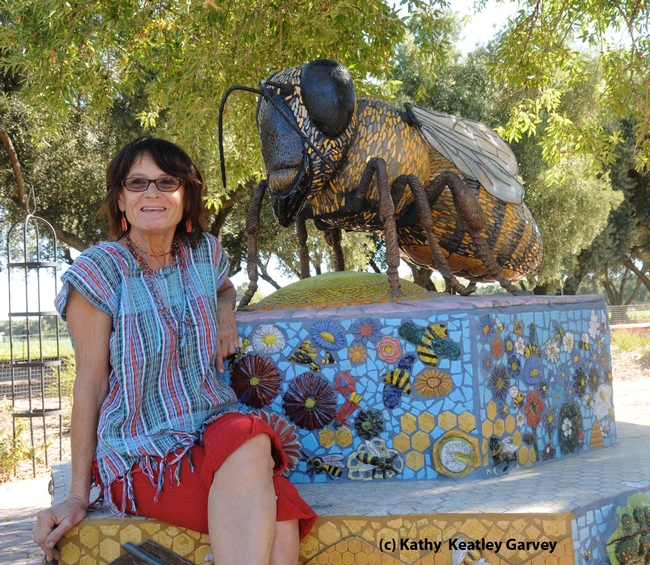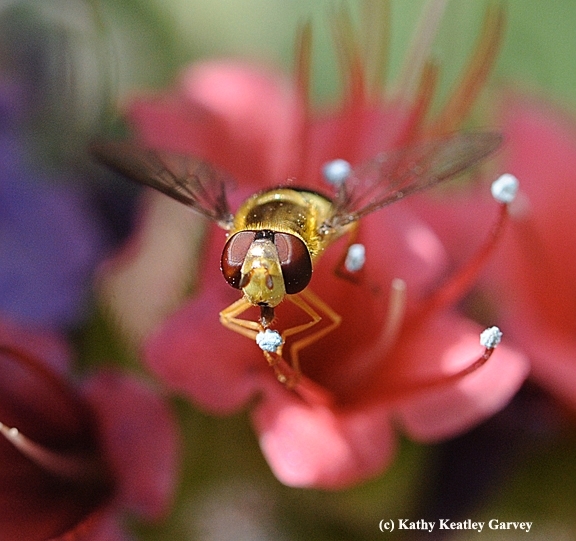Posts Tagged: National Pollinator Week
National Pollinator Week: Open house at UC Davis Bee Garden
June 18-24 is National Pollinator Week.
Do you know where your pollinators are? Think bees, birds, butterflies, bats and beetles.
And think flies. Especially syrphid flies, also known as "flower flies" and "hover flies."
The UC Davis Department of Entomology and Nematology is hosting an open house during National Pollinator Week from 11 a.m. to 2 p.m. at its bee garden, Häagen-Dazs Honey Bee Haven on Bee Biology Road, west of the central UC Davis campus.
Here's what you can expect to see or do:
- learn how to catch and observe bees up close
- see honey bees at work in an observation beehive
- learn about bee diversity and identification
- learn about what and how to plant for bees
- learn about growing and good pollination in home fruit gardens
- see easy-to-grow bee plants and solitary bee houses available for a donation to the garden.
The Häagen-Dazs Honey Bee Haven, installed in the fall of 2009 and located next to the Harry H. Laidlaw Jr. Honey Bee Research Facility on Bee Biology Road, off Hopkins Road, is a half-acre garden devoted to bee pollinator conservation and education. It was founded and sprang to life during the term of interim department chair, Professor Lynn Kimsey, director of the Bohart Museum of Entomology, who coordinated the entire project. Kimsey was singled out for her work when the Pacific Branch of the Entomological Society of America honored her and four others – "The Bee Team"– with the 2013 outstanding team award.
A Sausalito team – landscape architects Donald Sibbett and Ann F. Baker, interpretative planner Jessica Brainard and exhibit designer Chika Kurotaki – won the design competition. The judges were Professor Kimsey; founding garden manager Missy Borel (now Missy Borel Gable), then of the California Center for Urban Horticulture; David Fujino, executive director, California Center for Urban Horticulture at UC Davis; Aaron Majors, construction department manager, Cagwin & Dorward Landscape Contractors, based in Novato; Diane McIntyre, senior public relations manager, Häagen-Dazs ice cream; Heath Schenker, professor of environmental design, UC Davis; Jacob Voit, sustainability manager and construction project manager, Cagwin and Dorward Landscape Contractors; and Kathy Keatley Garvey, communications specialist, UC Davis Department of Entomology and Nematology.
Others with a key role in the founding and "look" of the garden included the UC Davis Art/Science Fusion Program, founded and directed by the duo of entomologist/artist Diane Ullman, professor and former chair of the UC Davis Department of Entomology, and self-described "rock artist" Donna Billick of Davis. Miss Bee Haven, a six-foot long worker bee sculpture, the work of Billick, anchors the garden. The art in the garden is the work of their students, ranging from those in Entomology 1 class to community residents. Eagle Scout Derek Tully planned, organized and built a state-of-the-art fence around the garden.
Why are pollinators so crucial? Take it from the Xerces Society for Invertebrate Conservation:
"Pollinators are essential to our environment. The ecological service they provide is necessary for the reproduction of over 85 percent of the world's flowering plants, including more than two-thirds of the world's crop species. The United States alone grows more than 100 crops that either need or benefit from pollinators, and the economic value of these native pollinators is estimated at $3 billion per year in the U.S. Beyond agriculture, pollinators are keystone species in most terrestrial ecosystems. Fruits and seeds derived from insect pollination are a major part of the diet of approximately 25 percent of all birds, and of mammals ranging from red-backed voles to grizzly bears. In many places, the essential service of pollination is at risk from habitat loss, pesticide use, and introduced diseases."
So, on Saturday, June 23, you won't see any red-backed voles or grizzly bears. But you'll see bees, butterflies, birds and beetles.
And flies. Syprhid flies.
For more information on the open house, access https://hhbhgarden.ucdavis.edu/wp-content/uploads/2018/01/Pollinator-week-flyer-2018-1.pdf
Why We Need to Push for Pollinator Protection
The 10th annual National Pollinator Week ends Sunday, June 25, and what an opportunity it's been to showcase our pollinators! As noted...
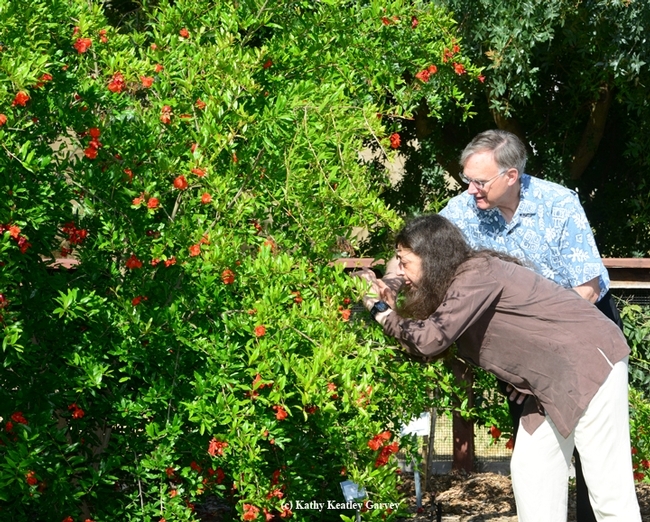
Entomologist May Berenbaum photographs a bee on a pomegranate tree at the UC Davis bee garden, the Häagen-Dazs Honey Bee Haven, during her May 2014 visit to the campus. With her is Extension apiculturist Eric Mussen, now retired. (Photo by Kathy Keatley Garvey)
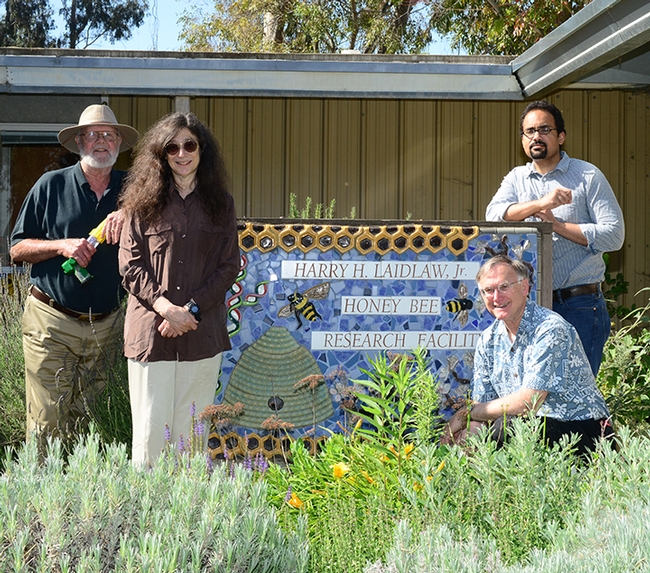
Entomologists, all! May Berenbaum presented a seminar at UC Davis in May 2014 and while on campus, toured the Harry H. Laidlaw Jr. Honey Bee Research Facility. With her (from left) are Robbin Thorp, UC Davis distinguished emeritus professor; bee scientist and assistant professor Brian Johnson (back), and Extension apiculturist (now emeritus) Eric Mussen. (Photo by Kathy Keatley Garvey)
Kate Frey: How to Attract Pollinators
It's National Pollinator Week and you might be wondering where your pollinators are. “I'd love to attract honey bees, bumble bees and...
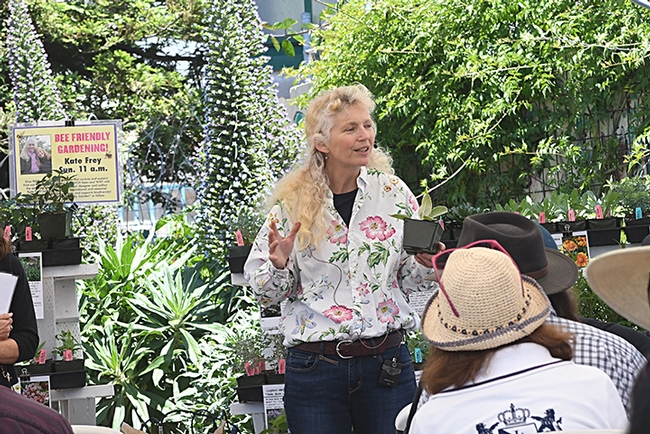
Award-winning garden designer, author and pollinator specialist Kate Frey addresses a recent crowd at Annie's Annuals and Perennials. Her topic: "Gardening for Bees, Beauty and Diversity." (Photo by Kathy Keatley Garvey)
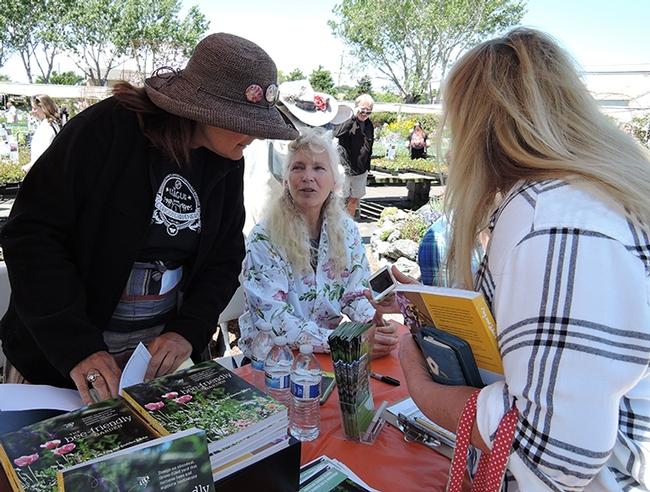
Following her talk at Annie's Annuals and Perennials, Richmond, Kate Frey (center) answers questions and signs copies of her book,"The Bee Friendly Garden" (co-authored with Professor Gretchen LeBuhn of San Francisco State University). (Photo by Kathy Keatley Garvey)
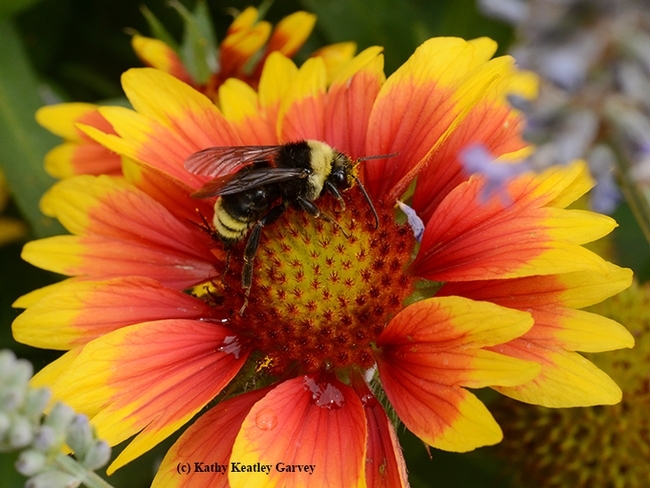
One of the pollinator plants that Kate Frey recommends is the blanket flower, Gaillardia. Here a bumble bee, Bombus californicus, gives its approval. (Photo by Kathy Keatley Garvey)
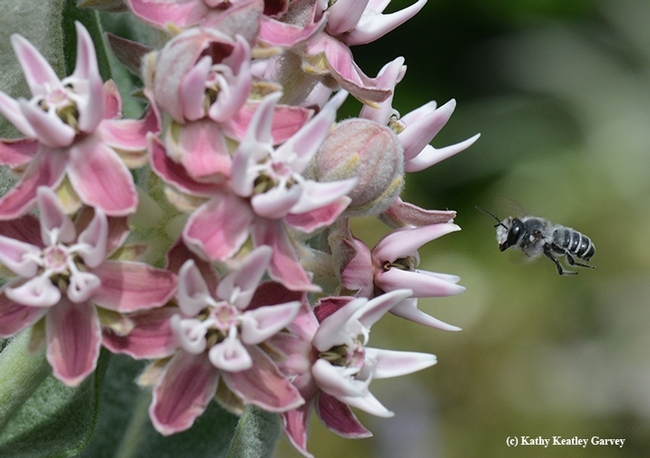
Milkweed as one of Kate Frey's favorite pollinator plants. It's not only the host plant of the monarch butterfly, but other insects like it, too, including this leafcutter bee. This species is Asclepias speciosa. (Photo by Kathy Keatley Garvey)
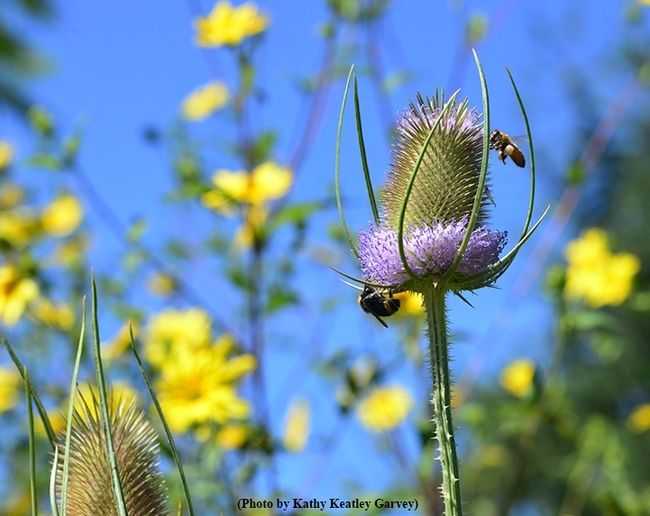
A bumble bee and honey bee share teasel in the pollinator garden of Kate and Ben Frey, Hopland. (Photo by Kathy Keatley Garvey)
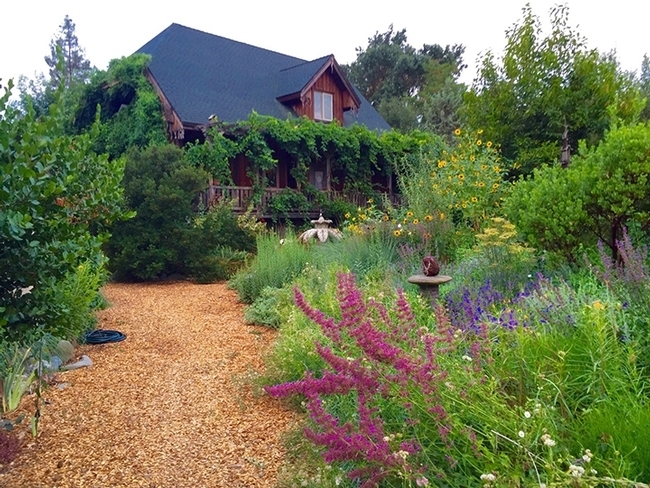
The garden of Kate and Ben Frey, Hopland, is a showstopper.
'P' is for People, Partners and Pollinators!
It's good to see all the focus on National Pollinator Week, as typified by UC Davis graduate student/native bee ecologist Margaret "Rei" Scampavia...
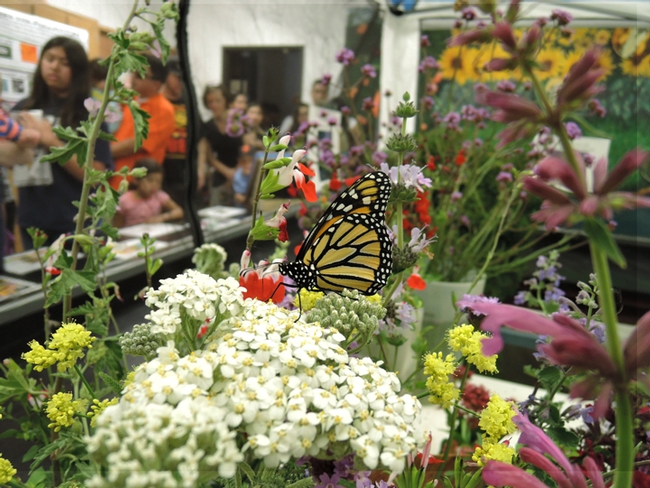
It was a mix of pollinators and people at the Pollinator Pavilion during UC Davis Picnic Day. Graduate student Rei Scampavia provided the display in Briggs Hall. (Photo by Kathy Keatley Garvey)
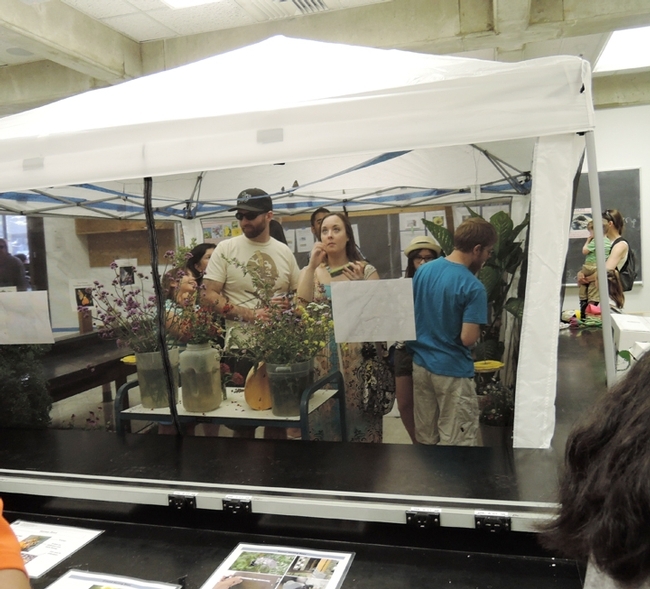
Visitors at the Pollinator Pavilion, UC Davis Picnic Day, could could get up close and personal with the pollinators in a zipped enclosure. (Photo by Kathy Keatley Garvey)
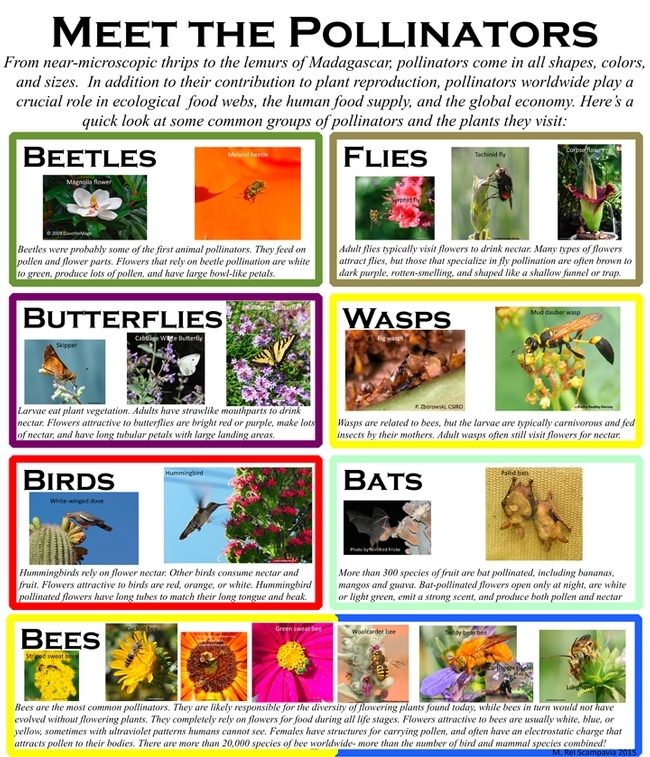
This poster by Rei Scampavia showcases the many species of pollinators.
Our Bees Deserve The Best
This is National Pollinator Week and what better time to post some bee wisdom from Cooperative Extension apiculturist (now emeritus) Eric...
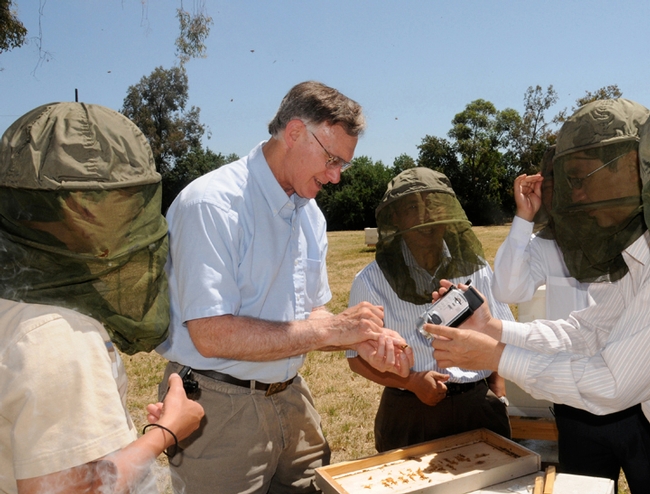
Extension apiculturist Eric Mussen (now emeritus, shows visitors the inside of a hive at the Harry H. Laidlaw Jr. Honey Bee Research Facility, UC Davis. (Photo by Kathy Keatley Garvey)
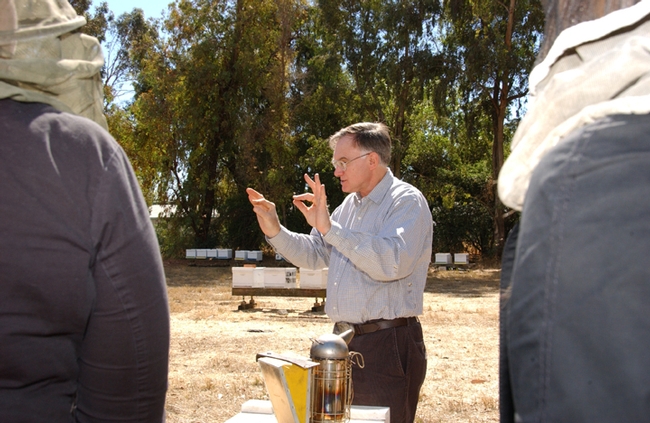
Extension apiculturist (now retired) Eric Mussen explains bees. (Photo by Kathy Keatley Garvey)
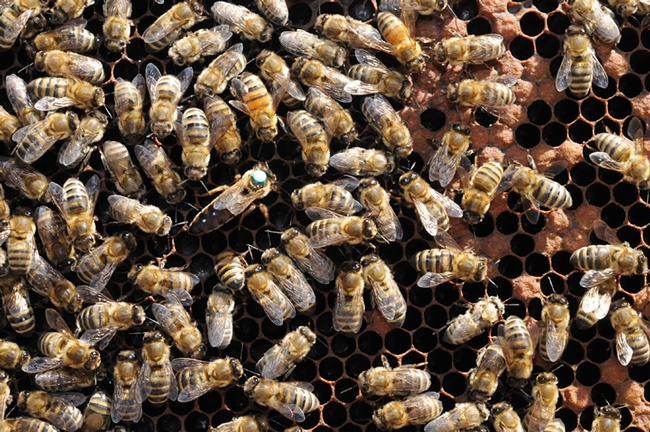
Inside the hive: the queen bee goes about laying eggs as worker bees tend to her needs and the needs of the colony. (Photo by Kathy Keatley Garvey)


